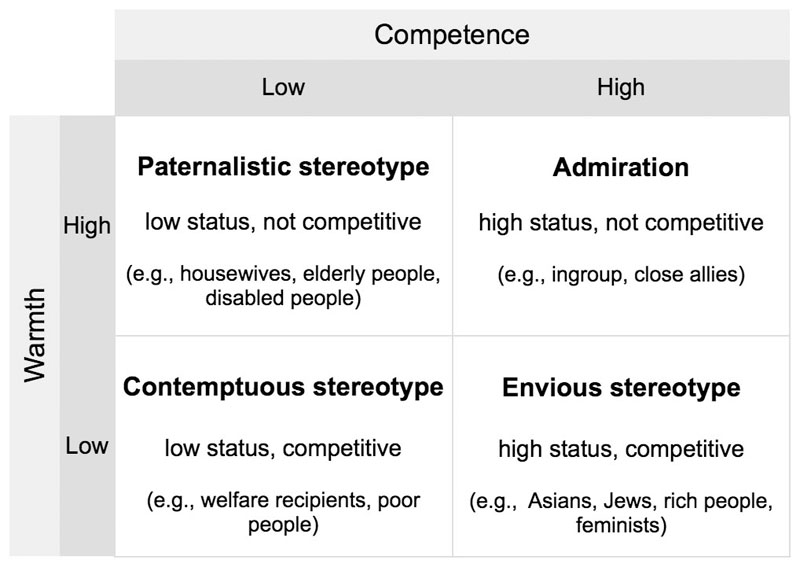Stereotypes, Prejudice, and Discrimination
- A stereotype is a thought reflecting expectations and beliefs about the characteristics of members of groups perceived as different from one's own.
- An implicit stereotype is the unconscious attribution of particular qualities to a member of a certain social group.
- An explicit stereotype is the result of intentional, conscious, and controllable thoughts and beliefs directed toward a group of people based on what is being perceived.
- Illusory correlation is the phenomenon of perceiving a relationship between variables (typically people, events, or behaviors) even when no such relationship exists.
- The ultimate attribution error is a group-level attribution error that offers an explanation for how one person views different causes of negative and positive behavior in ingroup and outgroup members.
- Scapegoating is the practice of singling out any party for unmerited negative treatment or blame.
- The just-world hypothesis is the cognitive bias that a person's actions are inherently inclined to bring morally fair and fitting consequences to that person, to the end of all noble actions being eventually rewarded and all evil actions eventually punished.
- The stereotype content model postulates that all social groups (e.g., older people, the homeless, drug addicts) fit within each of the four combinations of high and low levels of warmth and competence.
- The Stereotype Content Model postulates that groups perceived as low status and not competitive are viewed through the lens of a paternalistic stereotype.
- Groups perceived as low status and competitive are viewed through the lens of a contemptuous stereotype.
- Groups perceived as high status and not competitive are viewed through the lens of an admiration stereotype.
- Groups perceived as high status and competitive are viewed through the lens of an envious stereotype.
- Stereotype threat is a situational predicament in which people are or feel themselves to be at risk of confirming negative stereotypes about their social group.
- Prejudice refers to a positive or negative evaluation of another person based on their perceived group membership.
- In-group bias refers to a pattern of favoring members of one's own social group over out-group members. This can be expressed in evaluation of others, in allocation of resources, and in many other ways.
- The out-group homogeneity effect is one's perception of out-group members as more similar to one another than are in-group members, e.g. 'they are alike; we are diverse'.
- Discrimination is treatment or consideration of, or making a distinction in favor of or against, a person or thing based on the group, class, or category to which that person or thing is perceived to belong to rather than on individual merit.
- Institutionalized discrimination refers to the unjust and discriminatory mistreatment of an individual or group of individuals by society and its institutions as a whole, through unequal selection or bias, intentional or unintentional.
- In the jigsaw classroom approach, pupils are divided into small groups, mixed by race and by ability, to work co-operatively on a task.

Stereotype content model, adapted from Fiske et al. (2002): Four types of stereotypes resulting from combinations of perceived warmth and competence.
